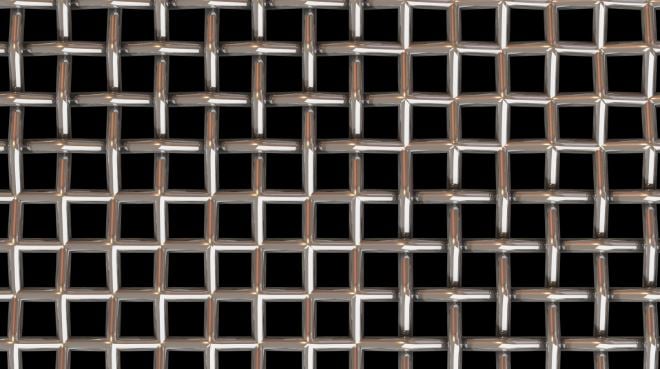Inconsistent Woven Wire Performance: What Is Happening With My Mesh?
With a slew of beneficial qualities, woven wire mesh is widely used for one thing in particular: Its ability to deliver accurate and repeatable results. But what happens when your woven wire starts to perform inconsistently?
As with any material, there are several factors that can alter the accuracy and reliability of your mesh. And as a result, you will find your mesh working wonders in certain instances, with other instances of frustrating performance lulls.
Knowing that this can be more than just user error, W.S. Tyler has dedicated itself on utilizing its 150 years of experience to help get to the bottom of the wire mesh's performance hiccups that leave you puzzled.
For this reason, we wrote the following article to dissect the various nuances that can affect woven wire performance so you can work to combat them and ensure yield consistent results again. You will learn:
- The definition of inconsistent woven wire performance
- The causes of inconsistent woven wire performance
- The concerns that arise from inconsistent woven wire performance
- How to prevent inconsistent woven wire performance
What Is Meant by Inconsistent Woven Wire Mesh Performance?
Inconsistent woven wire mesh performance references any sort of variable of deviation in the typical behavior of woven wire when applied to a specific application. This irregular behavior can come in many forms, including inconstant filtration, inconsistent particle separation, and uneven structural strength.
These inconsistencies can stem from a handful of things, which we will discuss in the next section. Regardless, they can have a detrimental impact on the quality, efficiency, and safety of your operation.
What Can Cause Inconsistent Woven Wire Mesh Performance?
Applicable to various applications, woven wire mesh is widely known for its accuracy. That said, there are several things that can cause your mesh to perform inconsistently, making accurate and repeatable results daunting to achieve.
These factors include weave tightness, environmental issues, wear and tear, improper maintenance, and physical damage.
Weave Tightness
When working with woven wire mesh, you will discover that tighter weaves tend to be more rigid, whereas loser weaves are looser and allow more particles to flow through. That said, the tightness of your mesh can change over time, especially when the manufacturer fails to implement a quality weaving technique.
With that, when the tautness of your mesh changes, you will subsequently encounter variations in performance.
Environmental Issues
While woven wire can be used in a wide range of applications, the environment in which it is placed will have a substantial impact on its performance over time. If your mesh isn't designed to withstand factors such as temperature, humidity, or corrosiveness, altered performance can be expected.
Wear and Tear
No matter what alloy or quality level of your woven wire, wear and tear is inevitable over time. This is even more true when the mesh is subjected to abrasive or corrosive materials.
Naturally, as this wear and tear becomes more severe, inconsistencies in mesh performance will become more prominent.
Improper Maintenance
When maintaining woven wire mesh, it is critical to apply techniques such as visual inspections and consistent cleanings. This will work to prevent or identify plugged pore openings, breaks, corrosion, and material contamination.
Failing to implement a reliable maintenance routine can compromise the integrity of your woven wire's accuracy, thus affecting its performance.
Physical Damage
Whether through high-impact usage from your operation or mishandling by personnel, physical damage can be detrimental to the reliability of your mesh. DAmge, such as torn or bent wires, can present inconsistencies in woven wire performance.
What Concerns Are Associated With Inconsistent Woven Wire Mesh Performance?
Woven wire mesh is predominantly used in filtration/separation applications due to its accurate pore openings. That said, when it begins to perform inconsistently, woven wire can present troublesome issues.
For example, when your mesh begins to perform inconsistently, you may begin to find unwanted particles passing through. This, in turn, comprises the quality of the end product.
In certain cases, this can render the material unusable as it won't comply with industry standards.

As inconsistent woven wire performance can stem from physical damage, weak points that speed up degradation and eventually lead to full-on breaks can become concerns. Of course, this will raise concerns about both the longevity and, more importantly, safety of the mesh.
In terms of the state of your mesh, inconsistent performance can require you to spend more time maintaining the mesh to prevent faults or breaks. To that end, in certain cases, increased replacement expenses can be the end result of inconsistent mesh performance.
This can be the woven wire itself or damaged machinery affected by the inconsistent performance.
How Can I Prevent Inconsistent Woven Wire Mesh Performance?
When it gets down to brass tacks, your woven wire will perform as well as the material it woven from. With this in mind, preventing inconsistent woven wire performance starts with integrating high-quality woven wire mesh that is produced to accommodate your exact need from a trustworthy mesh supplier.
It is also critical that your woven wire is installed properly. This includes ensuring it is properly secured and the proper amount of tensioning, if any, is applied.
But once in use, it is recommended that you inspect your wire mesh for wear, damage, and particle accumulation. This should go hand in hand with a regular cleaning regime in which residual particles are thoroughly removed.
In the case that inconsistent performant e is caused by broken woven wire, it should be replaced as soon as the fault is discovered.
Is Dissimilar Metal Corrosion the Root of Your Performance Inconsistencies?
Inconsistencies in woven wire performance are identified when there are consistent variables in the intended behavior. It is important to be mindful of these inconsistencies as they can affect the efficiency of your process, the quality of the end product, and, more importantly, the safety of personnel and end consumers.
With a handful of factors that can cause these inconsistencies, corrosion can be more detrimental than others. But as woven wire mesh is known to combat a wide range of corrosive materials, you must always consider dissimilar metal corrosion as a potential root of your corrosion concerns.
W.S. Tyler has been in the woven wire business for over 150 years and wants to use the knowledge we have within our four walls to help you make the most out of your mesh.
Read the following article to learn more about dissimilar metal corrosion and better determine if it is a concern for you:
About Ronnie Brown
Ronnie is the Content Writer for W.S. Tyler and has four years of experience as a professional writer. He strives to expand his knowledge on all things particle analysis and woven wire mesh to leverage his exceptional writing and graphic design skills, creating a one-of-a-kind experience for customers.




